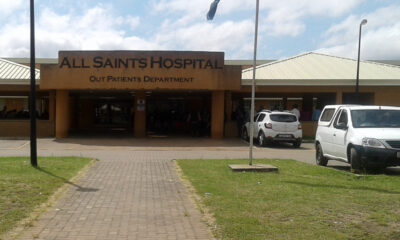News
Stretched Thin: South Africa’s Ambulance Crisis Leaves Lives Hanging in the Balance

In towns scattered across South Africa, it’s no longer surprising to wait hours for an ambulance — or worse, for it never to arrive at all.
Paramedics are sounding the alarm, not out of exaggeration, but desperation. They’ve seen what happens when a system crumbles: lives lost, communities in mourning, and medics risking everything to keep going. What used to be a proud, vital service has become a patchwork of broken vehicles, overworked crews, and impossible odds.
Cracking Under Pressure: The Numbers Tell a Grim Story
Health Minister Aaron Motsoaledi recently confirmed the painful truth: South Africa’s emergency medical services (EMS) simply do not have the capacity to meet the needs of its 63 million citizens. As of February 2025, there were only 14,000 EMS personnel nationwide. The recommended ambulance-to-population ratio of 1:10,000 is a distant dream.
Take KwaZulu-Natal (KZN) for example. On paper, the province has 480 ambulances. In reality, only about half are functional. The Eastern Cape isn’t faring any better — 125 out of 418 ambulances are out of commission. And in the Northern Cape? Some towns don’t even have a single operational vehicle.
“I Wouldn’t Let My Dog Ride in This”
That’s how one Northern Cape paramedic described the only ambulance available in his area: a worn-out vehicle with busted suspension, no proper cleaning materials, and zero backup. “If I refuse to take it, I get marked absent,” he said. “I’ve had to clean up blood and amniotic fluids with just a mop and water.”
He recalled a moment that still haunts him: transporting 16 people in the back of one ambulance because there was no other option. Another time, he had to stop on the side of the road to deliver a baby, then reload the mother and newborn into the same unsanitized vehicle.
This isn’t just burnout. It’s trauma — and it’s every single day.
Fewer Hands, Longer Hours, Riskier Work
Paramedics across provinces report working double shifts to make up for the lack of personnel. In the Eastern Cape, eight paramedics are expected to run a shift with just one ambulance to cover three towns — plus rural areas and long-distance patient transfers.
The emotional toll is relentless. Public frustration often turns violent. One paramedic was attacked after arriving late to a call — the patient had already died. “We’re being blamed for a system that’s failed us too,” he said.
Band-Aid Fixes and Broken Promises
While new ambulances are occasionally launched for the cameras, those on the ground say they never see them. Equipment is either broken or non-existent, with some paramedics having to purchase their own basic tools like stethoscopes.
Unions like the South African Emergency Personnel’s Union (SAEPU) and Hospersa are raising red flags about unsafe work environments, overwork, and a collapse in morale. In some regions, EMS staff even have to use their personal phones for emergency calls due to lack of resources.
According to SAEPU President Mpho Mpogeng, even Gauteng — often seen as better off — is relying heavily on interns to prop up a service desperately short of permanent staff. “People wait up to four hours for an ambulance,” he warned. “That’s not emergency care. That’s a death sentence.”
Behind the Scenes: A System Sinking Fast
Public Servants Association spokesperson Claude Naiker highlighted that even newly purchased ambulances are often parked due to a lack of drivers and medics. In provinces like the Western Cape, out of hundreds of new ambulances, only a fraction are running.
In KZN, Health MEC Nomagugu Simelane revealed that 310 EMS vehicles were awaiting repairs as of last year. Many have been off the road for more than two months due to backlogged parts and accident damage. Oversight visits found glaring shortages in even basic supplies — gloves, bandages, incubators, and cleaning materials.
It’s a system both overstretched and underfunded, where essential vehicles are used for routine patient transfers because no one can say no, even when it compromises emergency care.
Communities Left to Fend for Themselves
For many South Africans, the solution has become hiring private vehicles to get to the hospital, scraping together what little money they have in a desperate attempt to save loved ones. Tragically, some don’t make it. Those who might have lived die waiting.
Meanwhile, EMS staff are pushed to their limits. Overworked and underpaid, some go months without proper overtime payments. There’s little to no psychological support, even for teams regularly exposed to trauma.
Hospersa’s reports are chilling: unsafe stations, muggings while on duty, and fleets that fail to meet even the most basic health and safety standards.
So, What Now?
Despite the bleak outlook, paramedics continue to show up — not because the system supports them, but because they know what’s at stake. Every shift they work, every corner they turn on a broken road, is a gamble.
If there’s one thing the ambulance crisis in South Africa proves, it’s that emergency medical care isn’t just about speed — it’s about dignity, infrastructure, and political will.
Don’t Let This Be the New Normal
We can’t afford to look away. The lives lost in silence — in backyards, on roadsides, in rural townships — deserve more than excuses. They deserve action.
If you’re reading this, share it. Talk about it. Demand better from those in power. Because the next ambulance that doesn’t arrive might be for someone you love.
{Source: IOL}
Follow Joburg ETC on Facebook, Twitter , TikTok and Instagram
For more News in Johannesburg, visit joburgetc.com

























